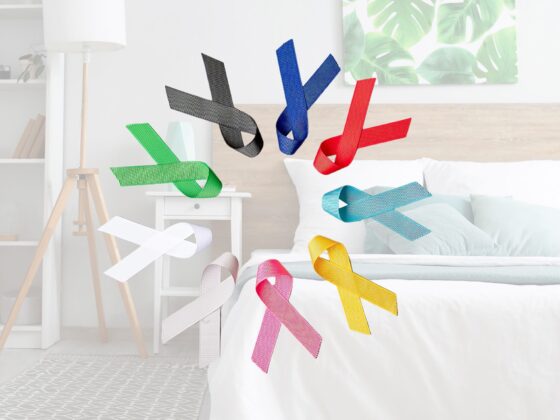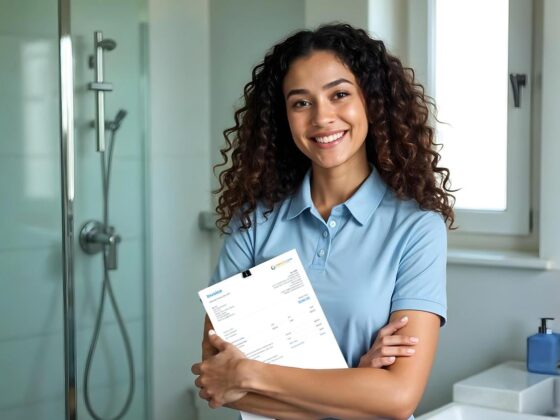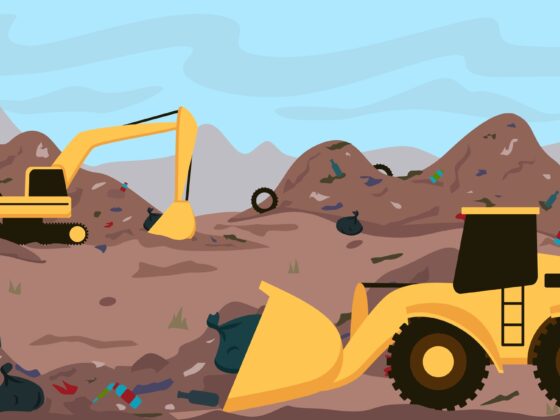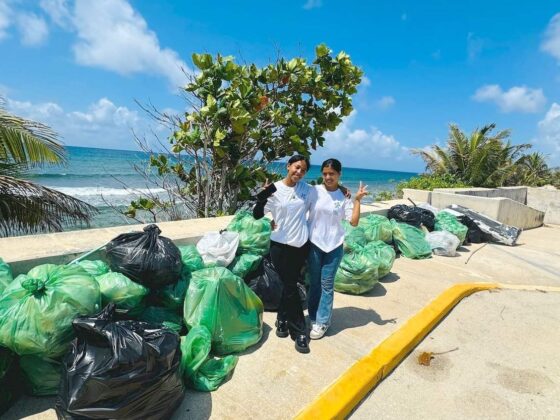Welcoming a baby into your home is a life-changing experience, and it often comes with a heightened awareness of cleanliness, safety, and health. From crawling on the floor to exploring household objects, infants and toddlers are naturally curious and frequently exposed to surfaces and items adults rarely think twice about. That’s why maintaining a hygienic home environment is more than just about appearances; it’s a foundational step in protecting your child’s developing immune system, skin, lungs, and overall well-being.
Health authorities like the American Academy of Pediatrics (AAP), Centers for Disease Control and Prevention (CDC), and the Environmental Protection Agency (EPA) emphasize that children are more vulnerable to environmental hazards, including common cleaning chemicals, dust, allergens, and mold, than adults. With their smaller size, faster breathing rates, and frequent hand-to-mouth behavior, babies and toddlers absorb higher doses of toxins and microbes relative to their body weight.
This comprehensive guide explores safe cleaning practices for homes with babies and toddlers, using trusted research and real-world tips. Whether you’re a new parent, caregiver, or simply updating your hygiene habits, this article offers clear, actionable steps to make your home healthier and safer—without the guesswork.
Feel free to use the table of contents to jump to specific sections that interest you most, or read through the entire guide to build a complete understanding of child-safe cleaning practices for your home.
Table of Contents
Why Child-Safe Cleaning Matters

Creating a safe, clean environment for babies and toddlers isn’t just about appearance—it’s a key part of supporting their health, development, and daily comfort. Young children are more vulnerable to harmful substances because their immune, respiratory, and nervous systems are still developing. They also spend more time on floors, frequently put objects in their mouths, and breathe more air relative to body weight than adults do.
The American Academy of Pediatrics (AAP) emphasizes that exposure to harsh chemicals or poor indoor air quality (IAQ) can increase a child’s risk of respiratory issues, skin irritation, and developmental concerns. Meanwhile, the Centers for Disease Control and Prevention (CDC) and Environmental Protection Agency (EPA) provide detailed guidance on safe home cleaning practices specifically for families with young children.
Child-safe cleaning practices reduce exposure to toxic ingredients, allergens, and bacteria. This ensures not only a healthier physical space but also peace of mind for caregivers who want to foster a home where children can grow, explore, and thrive safely. Understanding the risks of traditional cleaning and the benefits of safer alternatives is the first step toward long-term household health with babies and toddlers.
How to Choose Safe Cleaning Products for Babies and Toddlers
Choosing the right cleaning products is one of the most important steps in creating a safe home for young children. Many conventional cleaners contain harsh chemicals, artificial fragrances, and volatile organic compounds (VOCs) that can irritate the eyes, skin, or lungs—especially in infants and toddlers whose systems are still developing.
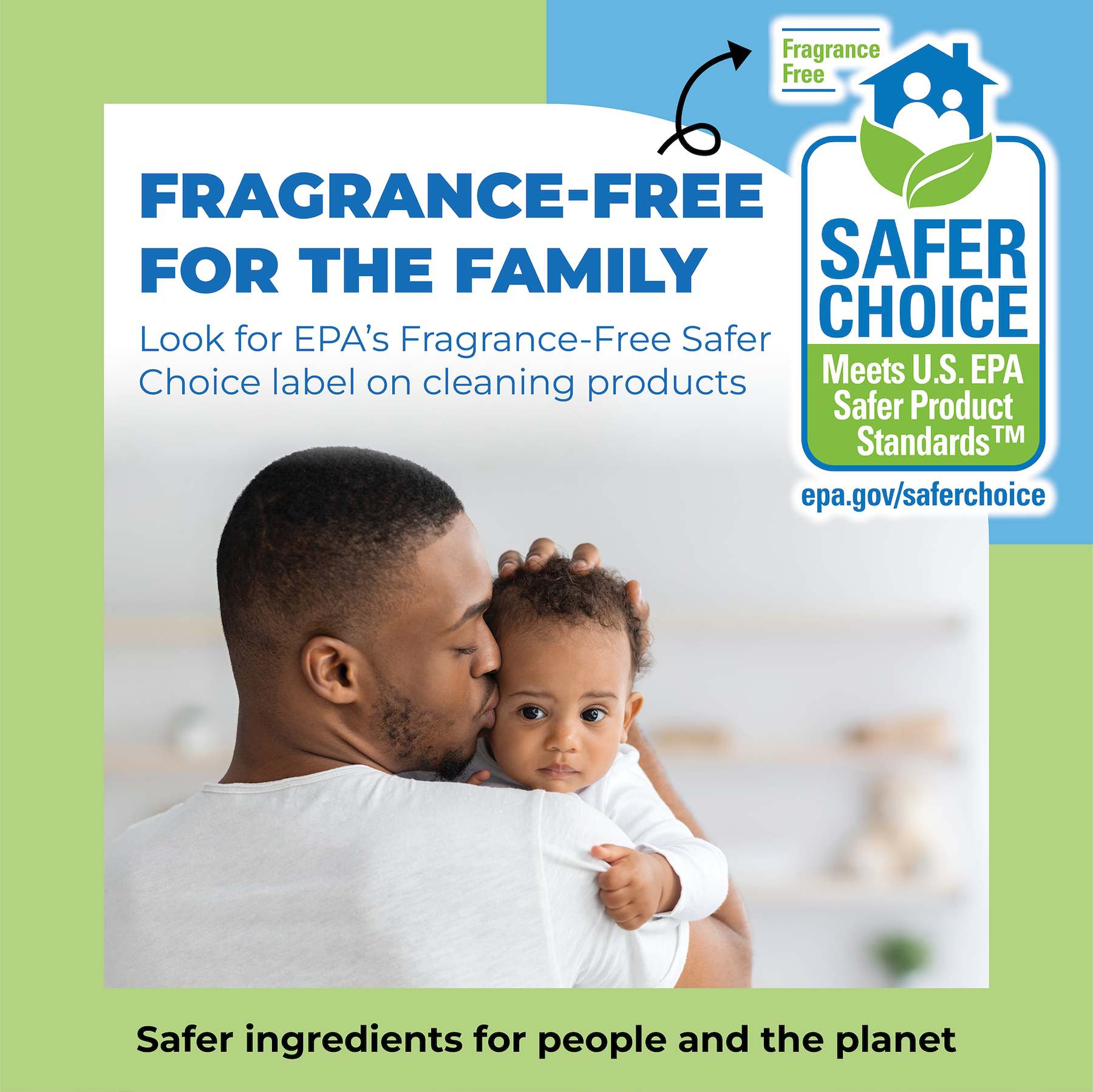
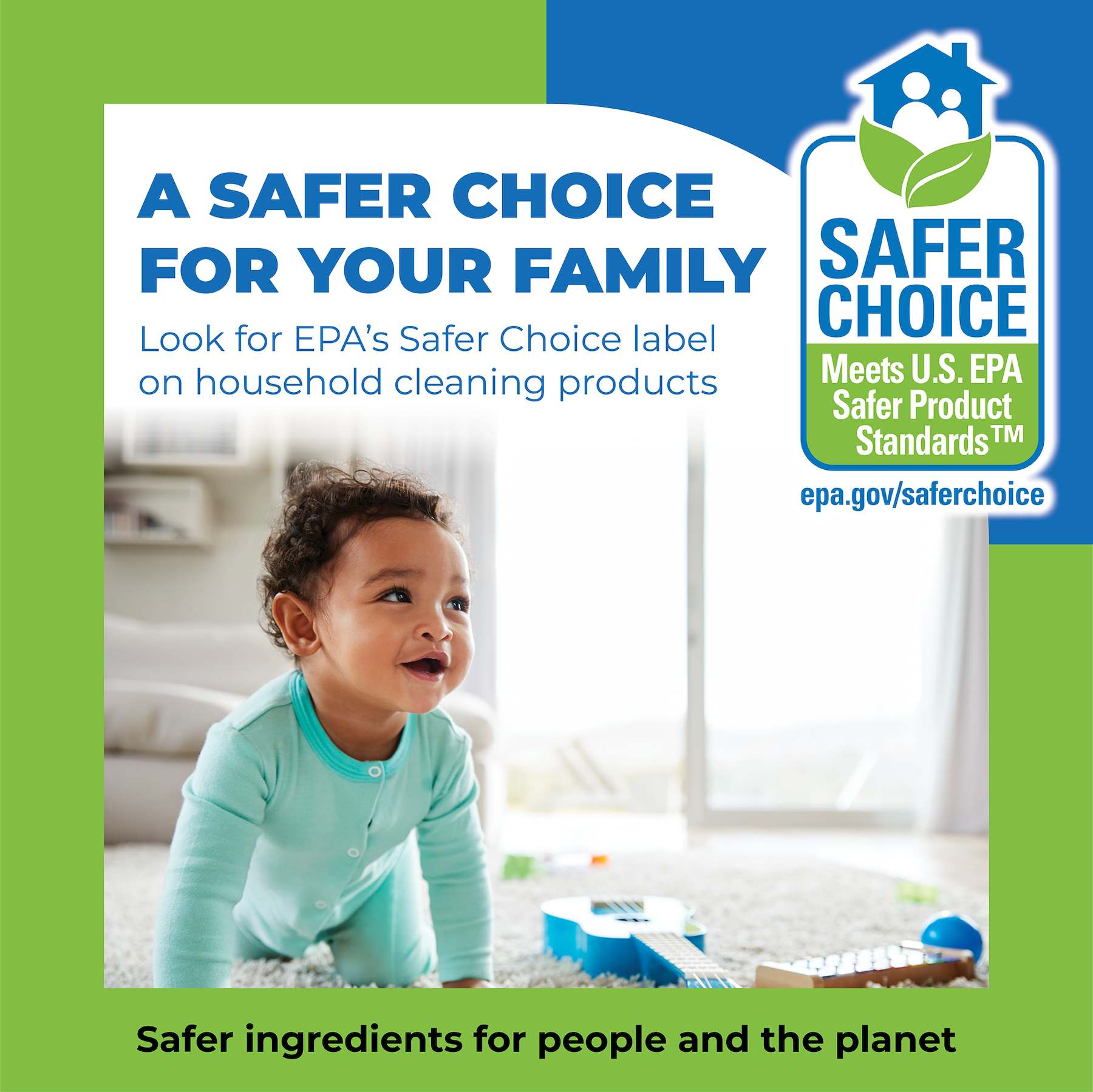
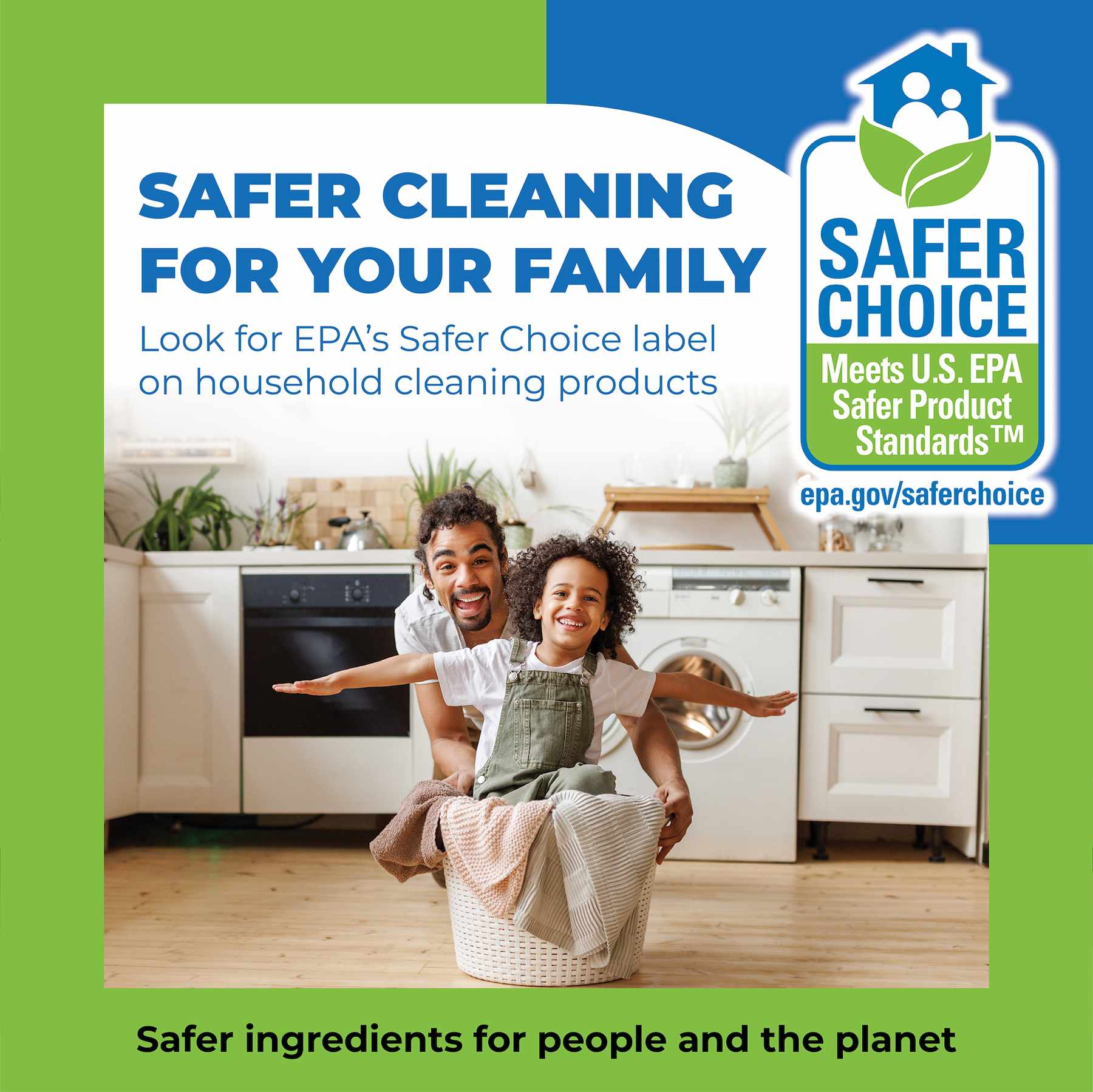
When selecting cleaning products for a baby-safe home, look for labels that say:
- Fragrance-Free (not just “unscented”) — these products contain no masking agents or hidden perfumes.
- Non-Toxic — certified to be safe for use around children and pets.
- EPA Safer Choice or EWG Verified — these certifications indicate stricter safety testing and ingredient transparency.
Avoid products that list:
- Ammonia
- Chlorine bleach (which should only be used with extreme caution, adequate ventilation, and never mixed with other chemicals)
- Phthalates
- Parabens
- Sodium Lauryl Sulfate (SLS) or other harsh surfactants
- Synthetic dyes
- VOCs (Volatile Organic Compounds)
Note, even “natural” does not always mean safe. Some essential oils or botanical extracts can trigger allergic reactions or pose health risks to babies. Always cross-check ingredients against trusted pediatric safety guidelines and consult your pediatrician when in doubt.
Safer Alternatives: Instead, consider plant-based cleaners or simple homemade alternatives like diluted white vinegar, baking soda, unscented castile soap, or food-grade hydrogen peroxide (always used with appropriate dilution and caution).
Important Note on DIY Solutions: While generally safer for cleaning, it’s important to note that most DIY solutions are not effective as disinfectants against many viruses and bacteria compared to EPA-registered products. When using DIY options:
- Prepare small, fresh batches frequently
- Store them clearly labeled and safely out of reach
- Test on inconspicuous surfaces first
- Ensure good ventilation during use
- Thoroughly rinse any food-contact surfaces or items your baby may mouth
Products with certifications from organizations like the EPA Safer Choice, EWG, and pediatric environmental health institutes offer more reliability than products marketed only as “green” or “eco-friendly.” Look for full ingredient disclosure, and when possible, choose concentrated cleaners that require less packaging and reduce environmental waste—a bonus for eco-conscious families.
Safe Storage and Handling of Cleaning Supplies
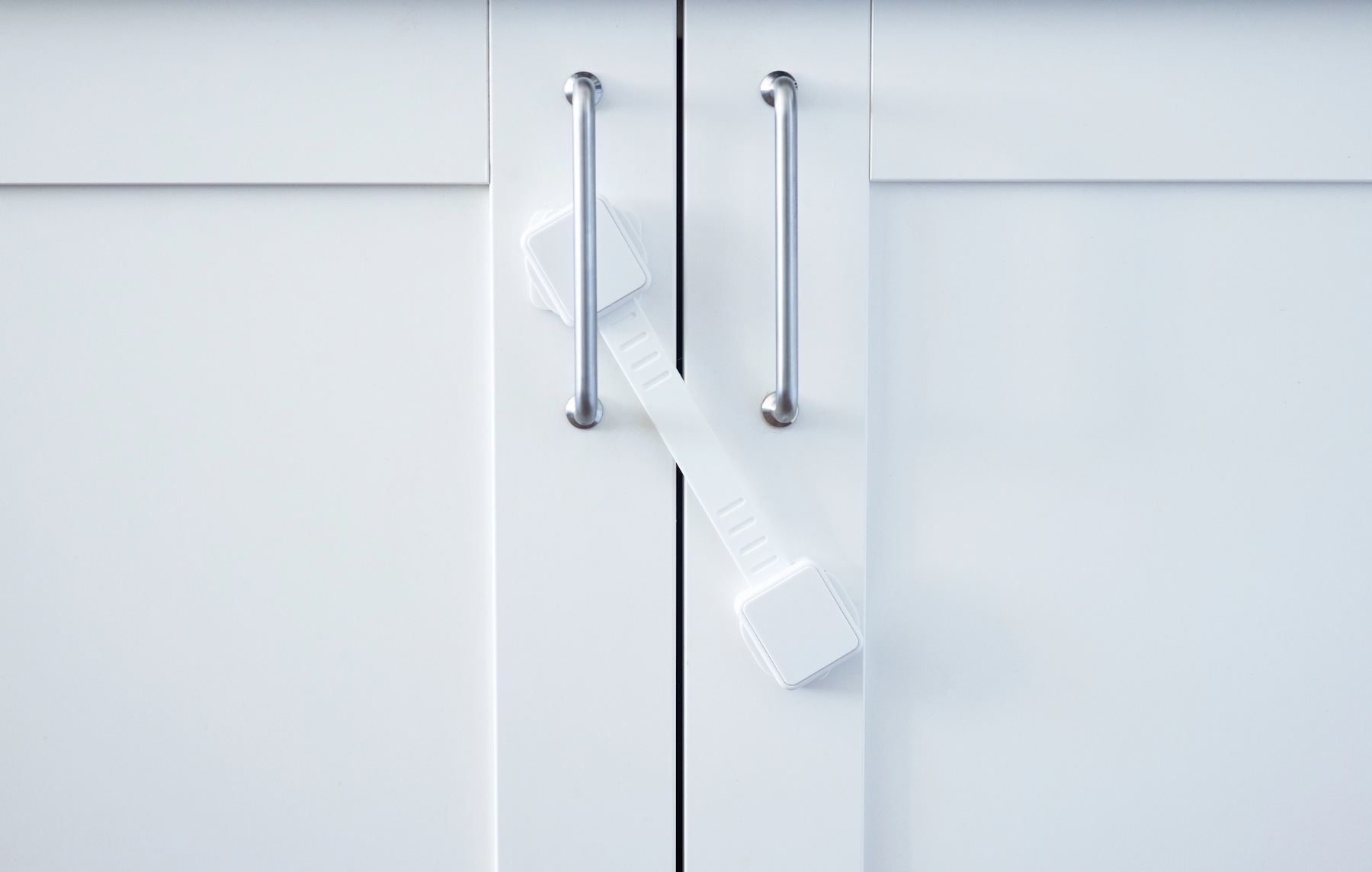
Even the safest cleaning products can pose a hazard if improperly stored. Young children are naturally curious and often explore the world by touching and tasting. Keeping all cleaning solutions, whether commercial or homemade, securely stored is non-negotiable for a baby-safe home.
Storage Guidelines
Here’s how to handle and store cleaning products safely:
- Store all cleaning supplies in high or locked cabinets out of reach of children. Avoid under-the-sink storage unless childproof locks are installed.
- Keep products in their original containers with intact labels to prevent accidental misuse or dangerous chemical combinations.
- Use child-resistant caps and closures when available, and double-check they’re secure after each use.
- Never leave cleaning products unattended, even briefly. Babies can move quickly and grab bottles in a matter of seconds.
- Avoid transferring chemicals into food or drink containers, which can lead to accidental ingestion.
During Use Safety Protocols
During use:
- Keep children in another room with proper ventilation while cleaning.
- Wipe and rinse surfaces thoroughly, especially items your baby may chew or touch (like toys, cribs, or play mats).
- After cleaning, wash your hands thoroughly before handling your child or their food.
For added precaution, you can affix safety reminder stickers to storage areas or keep a cleaning checklist that includes post-cleaning safety checks. These small habits significantly reduce household risks and reinforce long-term safety standards.
Healthy Cleaning Routines for a Baby-Safe Home
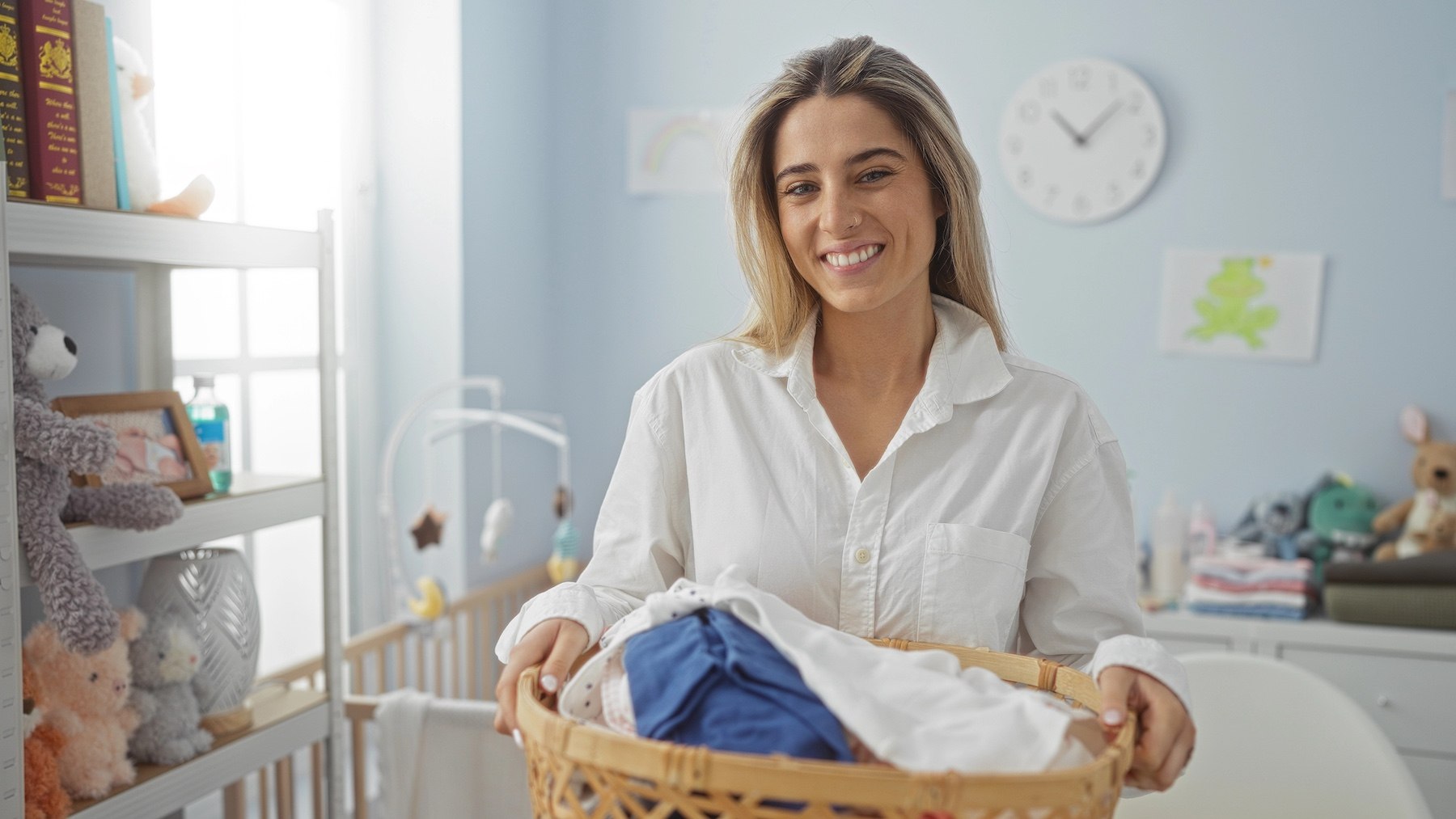
Establishing a consistent cleaning routine helps prevent the accumulation of dust, germs, and allergens, while reinforcing hygiene habits that protect your child’s health long-term. Babies and toddlers thrive in predictably clean environments that reduce exposure to irritants and infections.
Here’s a practical breakdown of how to structure your routine:
Daily Tasks: These habits help manage immediate messes, reduce germ spread in high-contact zones, and address items that quickly become soiled.
- Feeding Areas and Items: After each meal, wipe down highchairs (tray, seat, straps), the surrounding floor area, and any surfaces where food may have landed. Promptly wash bottles, sippy cups, dishes, and utensils used by your baby.
- Mouthed Items: Clean pacifiers, teethers, and frequently mouthed hard-surface toys (including some bath toys) after use or at least once daily with soap and water, then rinse well.
- Diapering Zone: Clean the changing mat or surface after each diaper change. Disinfect as needed, especially after messy changes or if your baby has diarrhea, following safe disinfectant protocols.
- High-Touch Surfaces: Regularly wipe common household surfaces that are frequently touched, such as doorknobs, light switches, faucet handles, and remote controls, using a child-safe cleaner. Consider disinfecting these if illness is present in the household.
- Laundry Quick Wash: Wash bibs, burp cloths, and any clothing items soiled with food, spit-up, or other bodily fluids.
- Floors (Spot Clean and Sweep): Sweep or vacuum main play areas and eating zones to quickly remove crumbs, dust, and visible debris that babies might pick up. Spot clean spills immediately.
Weekly Tasks: Dedicate time for more thorough cleaning of broader areas and items that don’t require daily attention but can accumulate dirt and germs over time.
- Floors (Thorough Clean): Mop all hard floors using a child-safe cleaning solution. Vacuum all carpets and rugs thoroughly, ideally using a vacuum with a HEPA filter to capture fine particles and allergens.
- Play Areas and General Toys: Clean play mats. Wipe down less frequently mouthed hard-surface toys and larger play equipment. Clean any outdoor or shared toys that have been used during the week.
- Baby Gear: Wipe down and sanitize (if appropriate and following product instructions) items like stroller frames and handles, car seat plastics (check manufacturer cleaning guidelines carefully), bouncers, and swings.
- Bathroom Deep Clean: Thoroughly clean and sanitize the bathtub, sink, toilet area, and bathroom floor. Clean all bath toys (even those not mouthed daily) to prevent soap scum and mildew buildup.
- Bedding and Linens: Wash all baby bedding (sheets, crib mattress protectors), sleep sacks, and baby towels in hot water (if fabric allows) using a fragrance-free, baby-safe detergent.
- Kitchen Surfaces: Wipe down kitchen countertops thoroughly, clean the sink, and wipe appliance fronts and handles (refrigerator, microwave, oven).
Monthly and Periodic Tasks: These deeper cleaning tasks help maintain overall home hygiene, reduce long-term accumulation of dust and allergens, and address less frequently cleaned areas.
- Detailed Dusting and Wiping: Deep-clean and wipe down crib frames, changing tables, bookshelves, and other nursery furniture. Wipe windowsills, baseboards, door frames, light fixtures, and accessible ceiling fan blades.
- Soft Furnishings and Toys: Launder washable curtains or vacuum drapes and blinds, especially in the nursery and play areas. Wash most soft toys according to their care labels (or more frequently if visibly soiled, heavily used, after travel, or post-illness).
- Appliance Maintenance: Clean out the refrigerator, wiping down shelves and drawers. Clean the interior of the microwave.
- Air Quality Maintenance: Inspect and, if necessary, clean or replace HVAC air filters and clean accessible vent covers to help maintain good indoor air quality.
Semi-Annually to Annually (Periodic Deep Cleaning):
- Schedule or perform a deep cleaning for carpets, area rugs, and upholstery every 6–12 months. This is especially important in high-traffic areas and baby play zones to remove embedded dirt, allergens, and residues. Consider professional child-safe cleaning services for this.
- Wash windows inside and out.
Pro Tip: For general cleaning, a simple solution of fragrance-free, biodegradable soap and water, or a properly diluted white vinegar solution (for appropriate surfaces), is often effective and safer. When sanitizing or disinfecting, always follow up with a thorough rinse of clean water for any surfaces or items your child may touch or mouth, unless the product specifically states it’s a no-rinse formula safe for such contact.
Improving Indoor Air Quality in Homes with Young Children

Understanding Indoor Air Pollutants and Their Sources
Many common household products, including cleaning agents, emit volatile organic compounds (VOCs)—chemicals that evaporate into the air and degrade air quality. VOCs found in cleaning sprays, air fresheners, synthetic fragrances, and even some furniture and building materials can cause respiratory irritation, headaches, and long-term health effects. Notably, formaldehyde, a known carcinogen, and phthalates used as fragrance stabilizers are frequent offenders.
In addition to VOCs, indoor air can be polluted by:
- Particulate matter: Dust, pet dander, pollen, mold spores, and tiny particles released during cooking or cleaning.
- Biological contaminants: Mold, bacteria, and viruses that thrive in damp or poorly ventilated spaces.
- Combustion byproducts: Carbon monoxide, nitrogen dioxide, and other gases from heating systems, stoves, or tobacco smoke.
Why Young Children Are Especially Vulnerable to Poor Air Quality
Babies breathe faster than adults, inhaling more air—and thus more pollutants—relative to their size. Their airways are smaller and more easily irritated, making them more prone to developing asthma and allergies. Studies from organizations like the American Academy of Pediatrics (AAP) and the Environmental Protection Agency (EPA) confirm that early-life exposure to indoor air pollutants can have lasting effects on lung function and overall development.
Impact of Modern Home Construction on Indoor Air Quality
While modern homes are designed to be energy-efficient by sealing gaps and reducing drafts, this airtightness can trap pollutants indoors, preventing them from dissipating naturally. Without proper ventilation systems or active air exchange, pollutant levels can build up to harmful concentrations, increasing health risks for infants and toddlers.
Proven Strategies to Improve Indoor Air Quality
Ventilation Is Key
- Open windows and doors regularly, even in cooler weather, to allow fresh air to circulate and dilute indoor pollutants.
- Use exhaust fans in kitchens and bathrooms to remove moisture and chemical vapors.
- Consider installing energy recovery ventilators (ERVs) or heat recovery ventilators (HRVs) to maintain airflow without sacrificing energy efficiency.
Minimize Use of VOC-Emitting Products
- Avoid aerosol sprays, air fresheners, scented candles, and heavily fragranced cleaning products, as these release harmful chemicals.
- Choose fragrance-free and low-VOC or VOC-free cleaning products, ideally certified by EPA Safer Choice or EWG Verified.
Control Humidity and Mold Growth
- Maintain indoor humidity between 30% and 50% using dehumidifiers or humidifiers as needed.
- Address leaks, condensation, or water damage promptly to prevent mold growth, a known respiratory irritant.
- Regularly clean and dry damp areas like bathrooms, basements, and around windows.
Regular Cleaning with Safe Practices
- Vacuum carpets and rugs at least twice weekly using a vacuum with a HEPA filter to capture fine particles.
- Dust surfaces using damp microfiber cloths to avoid dispersing dust into the air.
- Wash bedding, curtains, and soft toys frequently to reduce dust mite allergens.
Air Purification Systems
- Consider using a portable air purifier equipped with a HEPA filter combined with an activated carbon filter to trap both particulates and chemical odors.
- Place air purifiers in bedrooms or play areas where your child spends the most time.
Eliminate Indoor Smoking and Pollutants
- Never smoke or vape inside the home.
- Use clean-burning appliances and ensure proper ventilation when cooking or heating.
Monitoring and Maintaining Air Quality
- Use indoor air quality monitors to detect pollutant levels, humidity, and particulate matter.
- Schedule periodic HVAC maintenance and replace air filters regularly.
- Choose furniture and building materials labeled low-emission or formaldehyde-free to reduce indoor chemical sources.
Why Indoor Air Quality Matters for Your Child’s Health
Improving indoor air quality is not just about comfort but a vital investment in your child’s health and development. By reducing chemical exposures, controlling allergens, and ensuring fresh air circulation, you create a safer environment that supports clear breathing, better sleep, and long-term wellbeing.
Room-by-Room Child-Safe Cleaning Tips
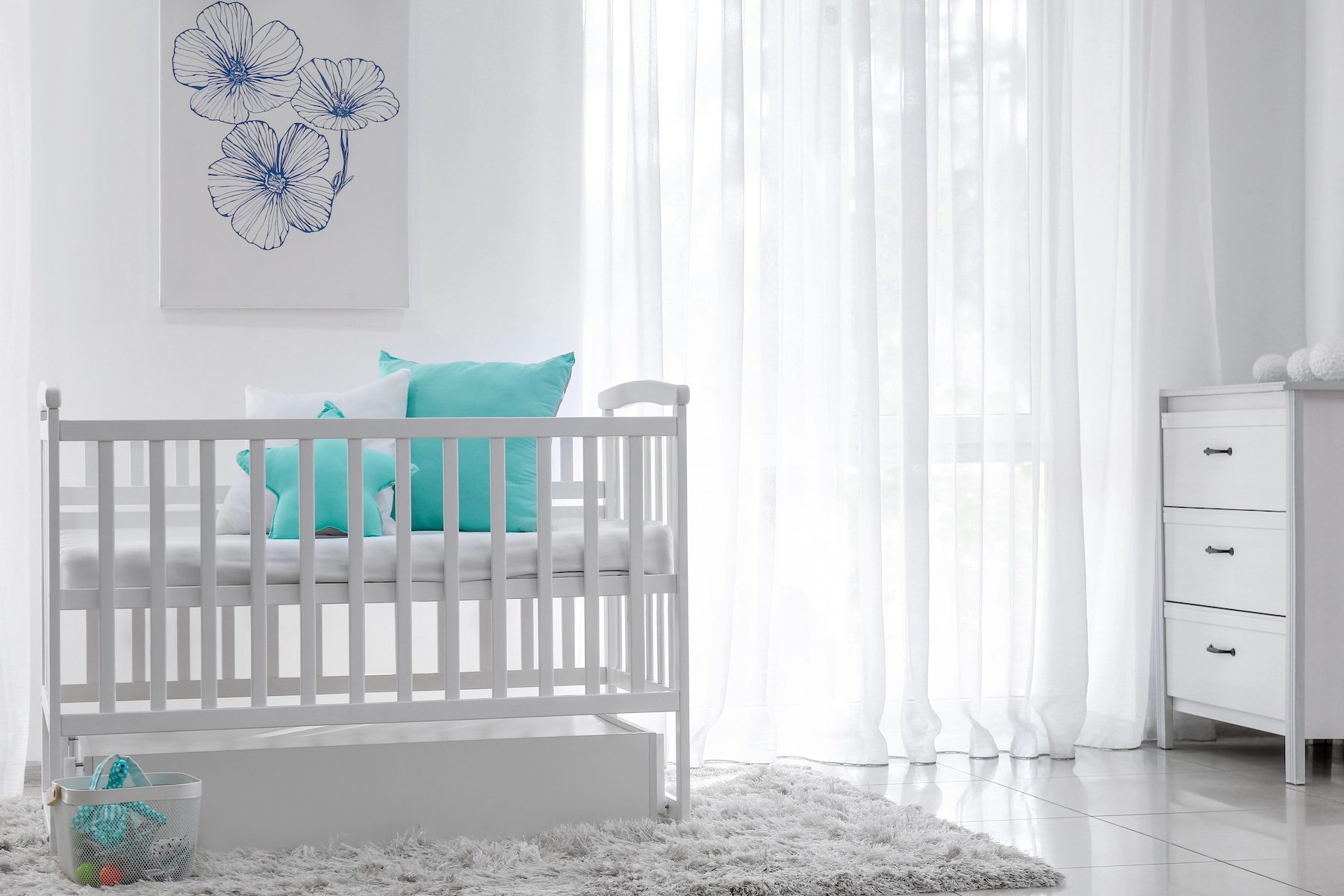
A room-by-room cleaning strategy helps ensure that no area is overlooked when creating a baby-safe environment. Each space in your home has unique cleaning needs, particularly those your baby and toddlers spend the most time in.
Nursery and Bedrooms:
- Dust all surfaces weekly, including window sills, shelves, and baseboards.
- Use fragrance-free detergent on baby bedding, clothes, and plush toys.
- Sanitize crib rails, changing tables, and pacifiers weekly or as needed.
- Vacuum carpets with a HEPA-filter vacuum at least twice per week.
Bathroom:
- Disinfect bath toys and rinse them thoroughly to avoid soap or mold buildup.
- Sanitize the tub and sink weekly using non-toxic, baby-safe disinfectants.
- Store medications and cleaning supplies in high cabinets with child locks.
Kitchen and Dining Area:
- Sanitize high chairs, bibs, and feeding trays after every use.
- Clean food prep surfaces with fragrance-free or natural disinfectants.
- Keep dish soap and sharp utensils well out of reach.
- Wipe appliance handles and drawer pulls frequently.
Living Room:
- Dust electronics and sanitize remote controls, coffee tables, and baby gates.
- Keep small objects and choking hazards off floors and low tables.
- Clean soft furnishings regularly to remove allergens.
By breaking cleaning down room by room, you can establish a rotation that covers all priority zones without becoming overwhelming. This method also helps track which areas need more frequent attention based on your child’s habits and mobility.
Specialized Cleaning Techniques for Safer Results
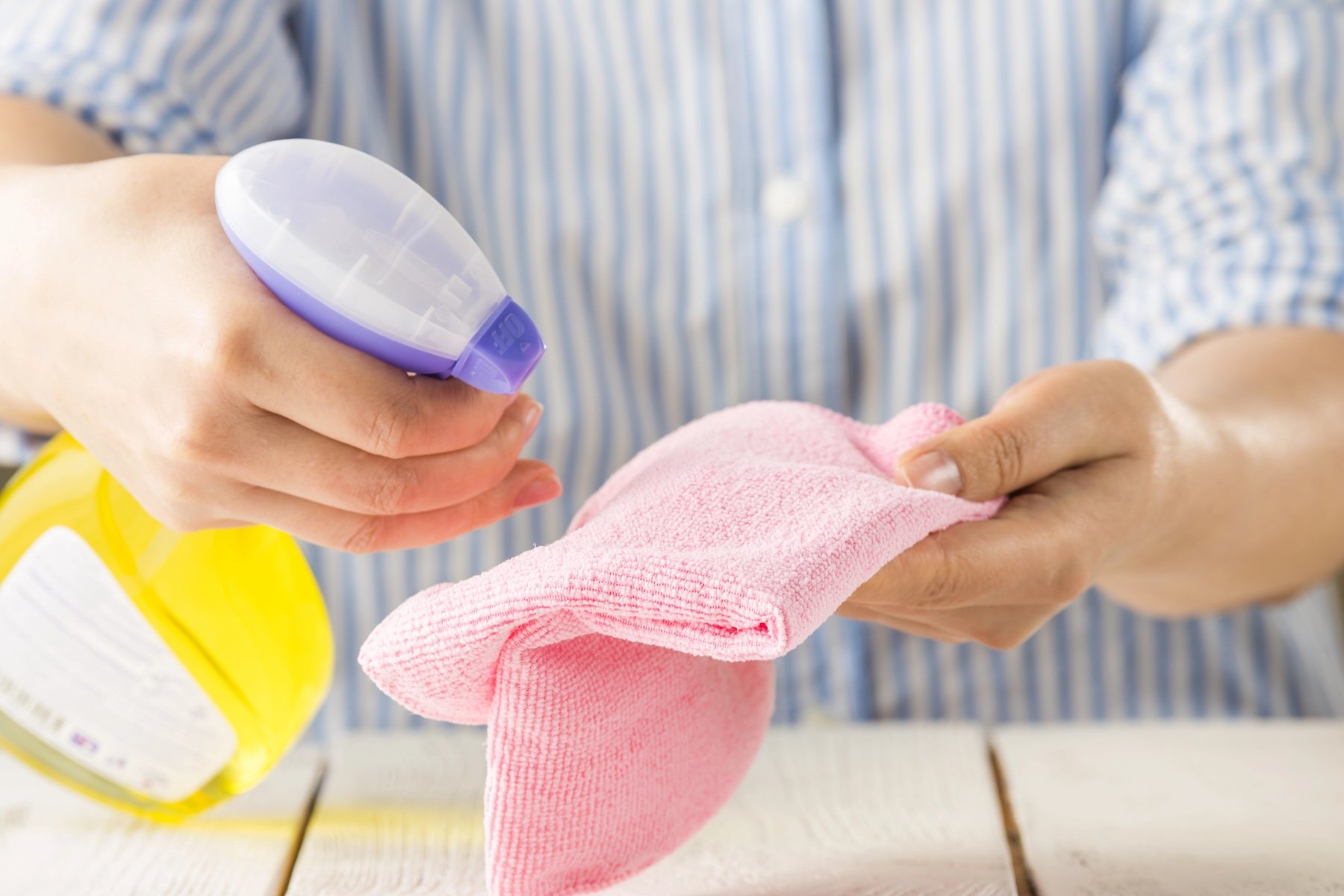
In homes with babies and toddlers, using the right cleaning techniques is just as important as choosing safe products. Proper methods minimize chemical residues, reduce airborne irritants, and ensure thorough removal of dirt and germs without unnecessary risks.
Key Techniques to Practice
- Ventilation First: Always open windows and use exhaust fans before, during, and after cleaning to disperse fumes and reduce indoor air pollution.
- Apply Cleaners to Cloths, Not Directly: Instead of spraying products directly onto surfaces, apply them to a cloth or sponge first. This reduces aerosolized particles that can be inhaled by children.
- Rinse and Wipe Thoroughly: After cleaning, especially on toys, highchairs, countertops, and floors where babies crawl, rinse surfaces with clean water and wipe dry to remove chemical residues.
- Use Cold or Warm Water: Hot water can release more VOCs from some cleaners. Use cold or warm water when possible to reduce fumes.
- Dilution Matters: Follow label instructions carefully for diluting concentrated cleaners. Overly strong mixtures increase chemical exposure risks.
- Avoid Mixing Chemicals: Never combine different cleaning agents, especially bleach with ammonia or acids, to prevent the release of toxic gases.
- Target High-Touch Areas: Prioritize regular cleaning of frequently handled items such as door handles, light switches, toys, pacifiers, and feeding equipment.
- Use Soft Cloths and Non-Abrasive Tools: These help protect delicate surfaces and reduce the need for harsh scrubbing that can release dust or residues.
- Laundry Practices: Wash baby clothes and linens separately using fragrance-free, hypoallergenic detergents to avoid skin irritation and allergic reactions. Use hot water cycles when possible for better sanitization.
Disinfection with Safety in Mind
For your baby’s safety, understanding the difference between cleaning, sanitizing and disinfecting is crucial.
Cleaning is the process of using soap or detergent and water to physically remove dirt, food, and some germs from surfaces like toys, floors, and highchairs. For general baby safety, regular cleaning is often enough.
Sanitizing is a process that reduces bacteria on a cleaned surface to safe levels. It’s vital for items your baby mouths, such as pacifiers and teethers, and for food-contact surfaces like highchair trays after they have been cleaned. Sanitizing mainly targets bacteria and may not kill all viruses. When using sanitizing products, always check if they are safe for baby items and if rinsing is required.
Disinfecting is a process that kills a broader range of germs, including most bacteria and viruses (like those causing flu or stomach bugs), typically by using products such as baby-safe disinfectants. Disinfecting is best reserved for higher-risk situations, for instance, on diaper changing areas (especially after bowel movements), potties, surfaces when someone in the home is sick, or areas contaminated with bodily fluids.
While routine cleaning and targeted sanitizing are often sufficient, disinfection provides a higher level of germ-kill and is necessary in specific situations. These typically include after an illness in the household, for certain diaper changes (especially if illness or high contamination is involved), or on surfaces that have had contact with raw meats, poultry, or fish.
When disinfecting:
- Choose an Appropriate Disinfectant: Opt for an EPA-registered disinfectant. When possible, select products specifically labeled as suitable for use in homes with children or those featuring safer active ingredients, as mentioned in our section on ‘How to Choose Safe Cleaning Products for Babies and Toddlers’ regarding guidance on certifications and identifying safer ingredients. Alternatively, a correctly diluted unscented bleach solution is also an effective option if all safety protocols are strictly followed.
- Follow Label Instructions Precisely: This includes pre-cleaning the surface if required, the application method, and the crucial contact time (the period the surface must remain visibly wet to be effective).
- Prioritize Safety During Application: Ensure good ventilation in the area. It’s also best to keep children and pets away from the area during application and until surfaces are dry and have been rinsed, if necessary.
- Rinse Food-Contact and Mouthed Surfaces: After the contact time is complete, thoroughly rinse any surfaces that will come into direct contact with your baby’s mouth or skin (or food) with fresh, potable water, unless the disinfectant product label explicitly states it’s a no-rinse formula for that specific use (e.g., some specialized bottle sanitizing methods).
- Use Sparingly and Purposefully: Limit the use of disinfectants to occasions where they are genuinely needed to minimize your family’s overall chemical exposure. For more comprehensive guidance, please see our dedicated section on “Safe Use of Disinfectants with Babies Present” below.
Additional Home Safety and Hygiene Practices for Families with Young Children

Beyond selecting safer cleaning products and maintaining proper routines, a holistic approach to home safety and hygiene is essential to minimize risks and promote the wellbeing of babies and toddlers. Young children’s natural curiosity and developing systems require caregivers to adopt practical, evidence-based strategies that go beyond surface cleaning.
1. Guidance on Fragrance-Free vs. Unscented Products
The distinction between “fragrance-free” and “unscented” is crucial for families with sensitive infants:
- Fragrance-Free: Products labeled as fragrance-free contain no added perfumes or masking agents. They are the safest choice for babies prone to allergies, asthma, or skin sensitivities.
- Unscented: These products may contain masking fragrances designed to cover chemical odors, potentially triggering allergic or respiratory reactions despite the lack of a “scent” perceived by humans.
Always prioritize fragrance-free labels and verify ingredient lists for hidden fragrance components like phthalates or synthetic musks.
2. Avoiding Antibacterial Overuse
While hygiene is important, excessive use of antibacterial products can lead to health and environmental issues:
- The American Academy of Pediatrics (AAP) advises against routine use of antibacterial soaps or cleaners for general household cleaning.
- Frequent antibacterial use may contribute to antibiotic resistance and disrupt the natural microbiome beneficial for immune development.
- Use plain soap and water for handwashing and general cleaning.
- Reserve antibacterial products for targeted disinfection during illness or medical need.
- Avoid antibacterial agents like triclosan, benzalkonium chloride, and chloroxylenol unless recommended by health authorities.
3. Surface Safety Specifics: Soft, Electronic, and Other Sensitive Items
Certain household items require special cleaning care to ensure safety without damage or residue buildup:
- Soft Toys and Plush Items:
- Wash machine-washable plush toys regularly with fragrance-free detergent.
- Use gentle cycles and extra rinse cycles to reduce detergent residue.
- Air dry completely to prevent mold or mildew.
- For delicate toys, spot clean with mild soap and water.
- Electronic Toys and Devices:
- Always remove batteries and power off before cleaning.
- Wipe exteriors with a cloth dampened slightly with mild soap solution or diluted vinegar.
- Avoid submerging or spraying liquids directly on electronic parts.
- Wooden Toys and Furniture:
- Use a damp cloth and mild soap solution; avoid soaking.
- Never use bleach or harsh disinfectants that can damage finishes and leave residues.
- Dry immediately to prevent warping.
- High Chairs and Feeding Stations: These surfaces are in constant contact with food and your baby, making diligent cleaning, and appropriate sanitizing or disinfecting, crucial for a hygienic eating environment.
- After Every Meal (Cleaning): The first and most important step is to thoroughly clean trays, seats, straps, and any part of the high chair your baby touches. Use warm water and a mild, baby-safe soap or detergent to remove all visible food particles, spills, and grime. Also, clean the floor area beneath and around the high chair.
- For Routine Sanitizing (Optional, after cleaning): If you wish to sanitize after cleaning for an extra measure of germ reduction on these food-contact surfaces, you can:
- Use a product specifically labeled as a food-contact surface sanitizer that is also approved as safe for use in environments with children. Follow all label instructions carefully, especially regarding any required waiting time or a final rinse with potable water.
- Some steam cleaners, if rated for sanitizing and used according to manufacturer directions, can also be effective on appropriate high chair surfaces.
- For Disinfecting (When a higher level of germ-kill is needed, e.g., after illness, known contamination, or for periodic deep disinfection):
- Choose an EPA-Registered Disinfectant: Select a disinfectant product that is registered with the U.S. Environmental Protection Agency (EPA) – you can find the EPA registration number on the product label. Prioritize products whose labels indicate they are suitable for food-contact surfaces and for use in homes with children. The EPA also has a “Design for the Environment” (DfE) logo for antimicrobial products, which helps identify disinfectants with safer chemical ingredients.
- Read and Follow ALL Label Directions Meticulously: This is paramount for both safety and effectiveness. The product label is the law and provides critical information on:
- Pre-cleaning: Most disinfectants work best on already cleaned surfaces.
- Application Method: How to apply the product (e.g., spray, wipe).
- Contact Time (or Dwell Time): The surface must remain visibly wet with the disinfectant for a specific period (often several minutes) to effectively kill germs. This is a critical step.
- Rinsing: For any food-contact surface like a high chair tray, the EPA requires (and the label will specify) a thorough rinse with potable (drinking) water after the disinfectant has met its contact time. This removes chemical residues. Allow the surface to air dry completely or dry with a clean paper towel or cloth.
- Safety Precautions: Use in a well-ventilated area, wear gloves if recommended, and always keep your baby away from the area during application and until the surface is dry and has been rinsed (if required).
- Diluted Bleach (An EPA-Recognized Option): If using a bleach solution, ensure it is unscented household bleach and dilute it according to EPA/CDC guidelines for disinfecting food-contact surfaces (typically, this might be around 1 tablespoon of 5-6% sodium hypochlorite bleach per gallon of cool water, with a contact time of at least one minute). A thorough potable water rinse followed by air drying is absolutely essential for any food-contact surface after using bleach.
- Removable Fabric Parts: Wash any removable fabric components (like seat pads or strap covers) regularly according to the manufacturer’s care instructions, ideally using a baby-safe, fragrance-free detergent.
4. Using Cleaning and Disinfecting Wipes on Baby Surfaces
While convenient, many wipes, especially those labeled ‘antibacterial’ or ‘disinfecting,’ contain chemicals that shouldn’t leave residues on surfaces babies frequently touch or mouth. When considering wipes for your baby’s environment:
- For general cleaning of minor spills or quick wipe-downs: Opt for wipes designed for sensitive use—ideally simple water-based or those with very mild, fragrance-free cleaning agents.
- For disinfecting with wipes: If you choose to use disinfecting wipes, look for those with EPA Safer Choice certification or active ingredients generally considered safer for use in sensitive environments.
- Always Read the Label Carefully: Pay close attention to the manufacturer’s instructions regarding rinsing surfaces after use. This is particularly critical for food-contact surfaces (like highchair trays) or any items your baby is likely to mouth. If rinsing is recommended, it’s a vital step to remove chemical residues.
- Consider Their Role: View wipes as a useful tool for specific situations or on-the-go needs, rather than a primary replacement for regular, thorough cleaning with safer solutions and cloths.
5. Safe Laundry Practices for Baby Clothes and Linens
Proper laundering reduces allergen buildup and irritants in baby fabrics:
- Wash baby clothes, bedding, and towels separately from adult laundry to avoid cross-contamination.
- Use fragrance-free, dye-free, and hypoallergenic detergents specially formulated for sensitive skin.
- Avoid fabric softeners and dryer sheets containing synthetic fragrances or chemicals.
- Use the warmest water temperature safe for the fabric to effectively remove germs and allergens.
- Rinse thoroughly to remove detergent residues that can irritate baby skin.
- Consider an additional rinse cycle if needed.
- Dry fabrics completely, ideally in direct sunlight when possible, to naturally disinfect and reduce mold spores.
6. Pediatric Cleaning Myths Debunked
Misconceptions around cleaning can lead to ineffective or harmful practices. Clarify common myths:
- “Natural always means safe.” Not true. Natural ingredients like essential oils can cause allergies or irritate sensitive skin and lungs.
- “More cleaning means better health.” Excessive cleaning with harsh chemicals can increase asthma risk by irritating airways.
- “Antibacterial soaps are necessary for preventing illness.” Routine antibacterial use is not recommended by the AAP and may harm immune development.
- “Strong fragrances mean the home is cleaner.” Strong chemical scents usually indicate VOCs and indoor air pollution, not cleanliness or safety.
7. Recognizing and Trusting Child-Safe Cleaning Certifications
Look for trusted third-party certifications that verify a product’s safety for children:
- EPA Safer Choice: Products with ingredients evaluated by EPA scientists for human and environmental safety.
- EWG Verified: Products meet strict health and transparency standards from the Environmental Working Group.
- Green Seal and EcoLogo: Environmental certifications that also consider health impacts.
- Ecocert: Focused on natural and organic product integrity.
Certifications provide assurance but always review ingredient lists and consider your child’s sensitivities.
8. Responding to Accidental Exposures or Skin Reaction
Despite best efforts to use child-safe products and practices, accidental contact or sensitivities can sometimes occur. If you notice skin irritation on your baby or toddler, or suspect they have had an adverse reaction to a cleaning product, it’s important to act quickly:
- Immediately rinse the affected skin thoroughly with copious amounts of cool, clean water for several minutes.
- Gently remove any clothing that may have come into contact with the product.
- Ensure the area is well-ventilated to clear any airborne irritants.
- Contact your pediatrician or a healthcare professional promptly for advice, especially if irritation, redness, or other symptoms persist, worsen, or if you have any concerns about the exposure. Keep the product container handy if possible, as the label may have useful information for medical personnel.
These comprehensive practices form the foundation of a safer, healthier home environment for families with young children, balancing effective hygiene with minimizing harmful exposures.
9. Decluttering for Easier and Safer Cleaning
One of the most overlooked aspects of creating a baby-safe home environment is the powerful connection between clutter and cleanliness. When every surface is covered with items, dust mites find countless hiding places, allergens accumulate in hard-to-reach corners, and thorough cleaning becomes nearly impossible. For families with babies and toddlers, decluttering isn’t just about organization—it’s a fundamental safety strategy that directly impacts your child’s respiratory health and reduces exposure to harmful particles that can trigger asthma and allergies.
The American Academy of Allergy, Asthma & Immunology emphasizes that reducing household clutter is one of the most effective ways to minimize allergen accumulation, particularly dust mites, which thrive in fabric-covered surfaces and undisturbed areas. When homes have fewer decorative items, excess furniture, and unnecessary belongings, parents can clean more thoroughly and frequently, creating an environment where harmful bacteria and allergens have fewer places to settle and multiply.
Beyond Physical Health Benefits, decluttered spaces also support your baby’s emotional development and mental wellbeing. Research in child development shows that overstimulating environments with excessive visual clutter can lead to increased fussiness, difficulty settling, and reduced attention spans in babies and toddlers. Calm, organized spaces promote better sleep quality, enhanced focus during play, and improved emotional regulation. Pediatric sleep specialists consistently recommend simplified, minimal bedroom environments to support optimal rest, which directly impacts your child’s mood, behavior, and developmental progress throughout their early years.
Strategic Decluttering for Baby Safety begins with identifying items that collect dust but serve no essential purpose in your daily routine. Remove excess throw pillows, decorative objects from low shelves, and unnecessary electronics from your baby’s environment. Focus particularly on the nursery and play areas, where your child spends the most time. Replace heavy curtains with washable alternatives, minimize stuffed animals to a manageable few that can be laundered weekly, and keep surfaces as clear as possible to enable quick, effective cleaning. The Environmental Protection Agency supports this approach, noting that reducing indoor particle sources significantly improves air quality and reduces respiratory irritants.
Room-Specific Decluttering Strategies should prioritize safety and cleaning efficiency. In the nursery, limit decorations to wall-mounted items that don’t collect dust at your baby’s level. Store toys in closed containers rather than open baskets, rotating them weekly to maintain interest while keeping the space manageable. In living areas where your baby plays, secure or remove small decorative items that pose choking hazards while creating surfaces that can be quickly wiped down. The key is maintaining a balance between a welcoming home environment and a space that supports your family’s health through easier, more effective cleaning routines.
Long-term Benefits of maintaining a decluttered, baby-safe home extend far beyond easier cleaning. Children who grow up in organized environments often develop better organizational skills themselves, while parents experience reduced stress from both cleaning tasks and safety concerns. Regular decluttering also supports the effectiveness of HEPA air purifiers and vacuum systems, allowing them to work more efficiently in spaces with fewer particle-collecting surfaces. This creates a positive cycle where less clutter leads to better cleaning, which supports better indoor air quality and ultimately contributes to your family’s long-term health and wellbeing.
How Professional Cleaning Services Can Support a Child-Safe Home
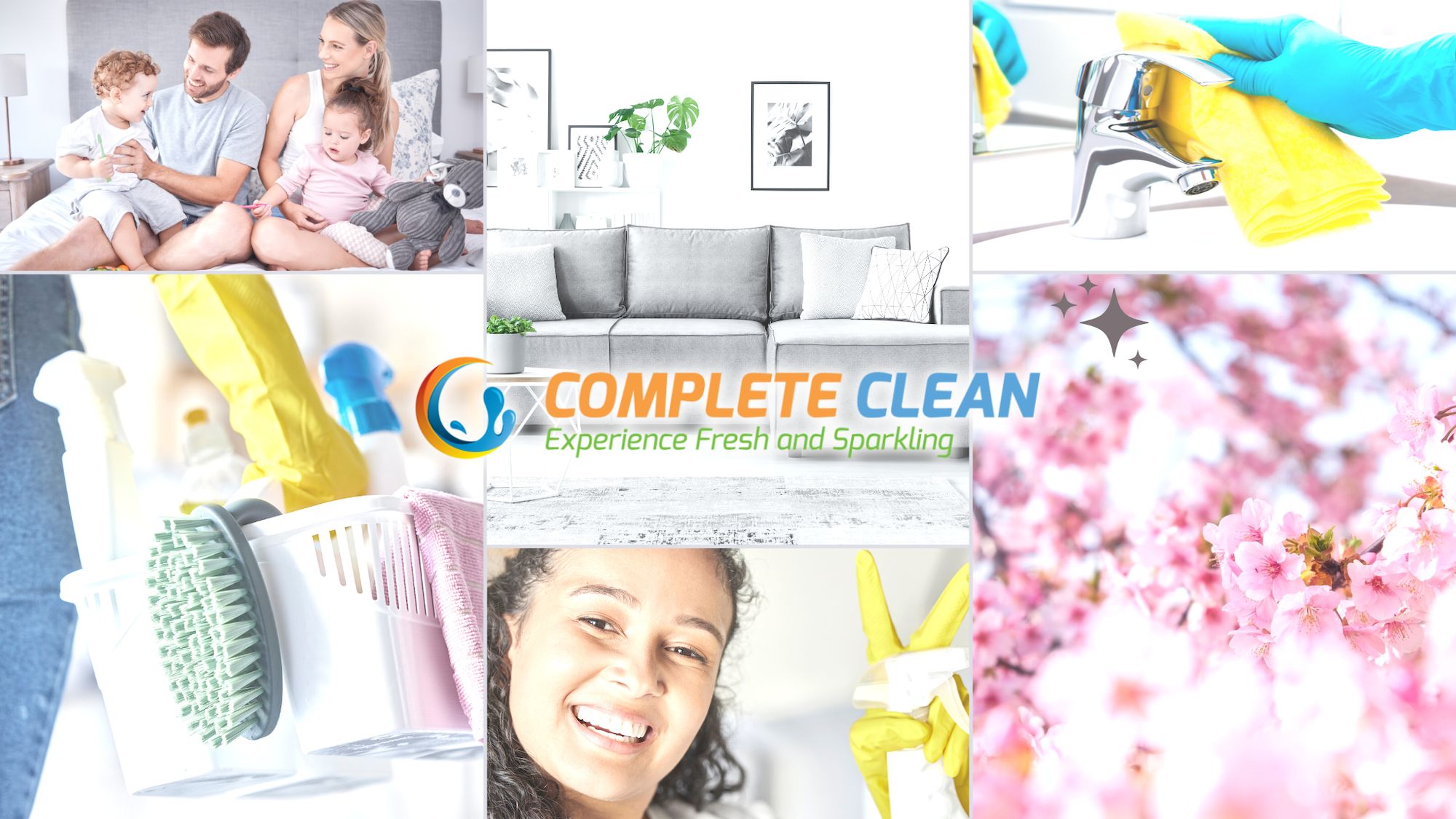
While many families manage their cleaning routines independently, professional cleaning services can play a valuable role in maintaining a healthy, child-safe environment — especially for busy households or those with high cleaning demands.
Benefits of Professional Cleaning for Families with Babies and Toddlers
- Expertise in Safe Cleaning Practices: Reputable cleaning companies trained in child-safe protocols use non-toxic, fragrance-free, and EPA-approved products designed to minimize chemical exposure risks to infants and toddlers.
- Consistent Deep Cleaning: Professionals can perform thorough cleaning tasks, such as carpet shampooing, upholstery cleaning, HVAC vent dust removal, and cleaning high-touch areas, that may be difficult to maintain regularly at home.
- Reduced Parental Burden: Outsourcing intensive cleaning reduces stress on caregivers, allowing more time for child care and bonding.
- Customized Cleaning Plans: Many services tailor their offerings to family needs, including schedules around nap times and using approved cleaning products.
- Professional Equipment: Access to HEPA-filter vacuums, steam cleaners, and eco-friendly detergents enhances cleaning efficiency and indoor air quality.
- Allergy and Asthma Management: Expert cleaning can help reduce dust mites, mold spores, and other allergens that exacerbate respiratory conditions common in young children.
Choosing a Child-Safe Professional Cleaning Service
When choosing a cleaning service, consider these factors to ensure child safety and peace of mind:
- Product Transparency: Confirm that the service uses EPA Safer Choice or equivalent certified cleaning products. Avoid companies relying heavily on bleach, ammonia, or synthetic fragrances.
- Staff Training: Ask about training in handling homes with infants and toddlers, including knowledge of safe cleaning practices and chemical sensitivities. Inquire about the company’s hiring and screening processes for their staff. Knowing that employees who will be in your home (and around your children) are vetted, for instance, through background checks, can offer significant additional peace of mind.
- Customized Service Agreements: Look for flexibility in scheduling and service scope to align with your family’s routines and needs.
- References and Reviews: Check for positive feedback from families and friends with young children.
- Environmental Commitment: Choose services that prioritize environmentally friendly and non-toxic cleaning solutions, reducing overall chemical exposure.
- Verify Insurance Coverage: Confirm that the cleaning service carries comprehensive liability insurance. This is vital protection for you and your home, covering potential accidental damage to your property or any injuries that might occur while their team is working. A professional, responsible service should readily provide you with proof of their current liability insurance.
Complete Clean: Child-Safe Cleaning Services Families Trust in the Cayman Islands
Complete Clean is a leading residential and commercial cleaning company in the Cayman Islands, trusted by families for its environmentally responsible cleaning solutions. With a team trained in safe cleaning protocols and a commitment to using fragrance-free, EPA-approved products, Complete Clean helps create healthier indoor spaces for homes with babies and toddlers.
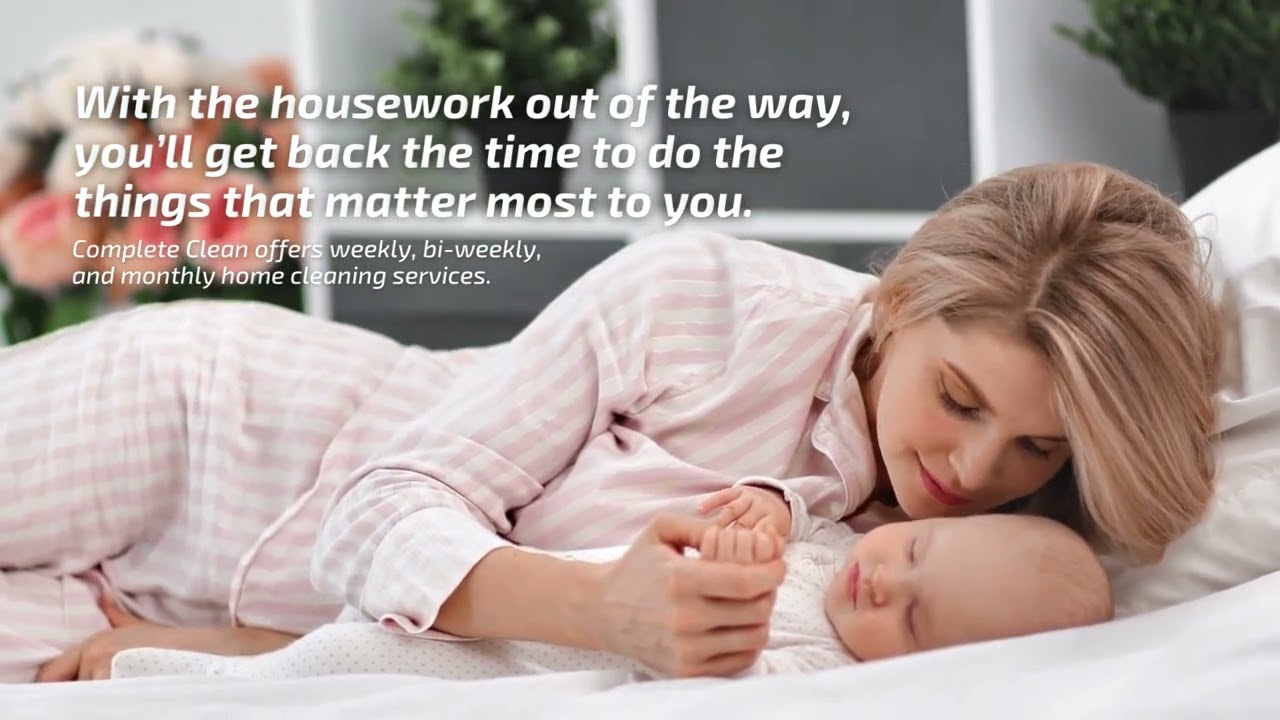
Our family-friendly service plans are designed to accommodate busy schedules, reduce exposure to allergens, and support better indoor air quality. Whether it’s sanitizing nursery surfaces, deep-cleaning carpets, or simply giving parents time back in their day, Complete Clean is dedicated to helping families thrive in safer, cleaner environments.
What Parents Are Saying About Complete Clean…
“Being a new mum, I hardly have time to clean these days in between work and looking after the baby. I’m so thankful for the ladies at Complete Clean for coming to clean my house each week. They work around my busy schedule to come at a time that is convenient to me. No job is too big for them. I love getting home on a Friday to a clean home ready to spend my weekend with my family rather than doing chores. I highly recommend them.”
— Katie Tyrer-Lavelle, Cayman Islands Resident (Google Review)
Contact Complete Clean to learn more!
Additional Considerations
- Communication: Maintain open dialogue with your cleaning service about any specific allergies, sensitivities, or cleaning preferences.
- Preparation: Before professional cleaners arrive, secure toys, pacifiers, and baby items to prevent accidental contact with cleaning chemicals.
- Post-Cleaning Ventilation: After cleaning, ventilate the home thoroughly before allowing babies and toddlers to re-enter treated areas.
- Emergency Awareness: Ensure cleaning staff know emergency protocols in case of accidental chemical exposure or spills.
Complementary Role to DIY Home Cleaning
Professional cleaning is not a replacement for daily safe cleaning routines (the everyday upkeep of wiping surfaces, tidying spaces, and using safe, non-toxic products to maintain hygiene). Instead, it serves as a valuable complement. Families benefit most when professionals support an overall strategy that emphasizes non-toxic products, ventilation, and surface rinsing. This integrated approach fosters a healthier home, reduces the risk of chemical exposure, and promotes wellbeing for the entire family.
Sustaining a Healthy and Safe Environment for Babies and Toddlers
Creating and maintaining a safe, healthy home environment for babies and toddlers requires intentional choices and consistent practices. This is not about achieving a perfectly sterile space, which is an unrealistic goal and not necessarily optimal for a child’s developing immune system, but about thoughtfully minimizing exposure to harmful chemicals, allergens, and pollutants that can impact developing bodies and sensitive systems.
By prioritizing the selection of cleaning products with transparent ingredients and reputable certifications, parents can reduce toxic exposures without sacrificing cleanliness. Equally important is the safe storage and careful handling of all cleaning agents to prevent accidental ingestion or contact.
Adopting thorough cleaning routines tailored to the unique needs of young children, such as frequent sanitation of toys, feeding areas, and play spaces, further protects health. Combined with strategies to improve indoor air quality, including ventilation and avoidance of synthetic fragrances, these practices create an environment that supports respiratory health, skin integrity, and overall development.
Regular review of cleaning habits and staying informed on emerging safety guidelines empower caregivers to adapt and refine their approach over time. Consulting pediatricians or environmental health experts can provide personalized advice for families with specific sensitivities or concerns.
Ultimately, fostering a child-safe home is an ongoing commitment that benefits not only the youngest family members but all residents. Each deliberate cleaning step taken with care and knowledge contributes to a foundation of well-being and peace of mind—a healthy space where children can grow, explore, and thrive safely.
Frequently Asked Questions (FAQ) About Safe Cleaning Practices for Homes with Babies and Toddlers
This FAQ section addresses common concerns and practical questions parents have about maintaining a clean and healthy home environment for their little ones. Find expert-backed answers on choosing safe cleaning products, effective disinfecting methods, minimizing chemical exposure, improving indoor air quality, and more. Whether you’re new to child-safe cleaning or looking to refine your routine, these answers provide clear, actionable guidance to protect your baby’s health and wellbeing.
Are natural cleaning products safe to use around babies and toddlers?
Yes, but not all natural products are safe around babies. Some natural ingredients and essential oils can cause allergic reactions or respiratory issues in infants and toddlers. The key is choosing the right products: look for certifications like EPA Safer Choice or EWG Verified, avoid products with essential oils or strong botanical extracts, and always test on a small area first. When in doubt, consult your pediatrician before using any new product around your baby.
What does “fragrance-free” mean versus “unscented” in baby-safe cleaning products?
“Fragrance-free” products contain no added scents or masking agents, making them safer for babies. “Unscented” may still include masking fragrances that can irritate sensitive children.
How can I safely disinfect surfaces in a home with babies and toddlers?
Use EPA-registered disinfectants approved for family use, ensure proper ventilation, follow label instructions for contact time, and thoroughly rinse surfaces babies will touch or mouth.
Should I use antibacterial soaps and cleaners in a home with babies?
Routine use is discouraged by the American Academy of Pediatrics due to potential antibiotic resistance and skin irritation. Regular soap and water are sufficient for everyday cleaning and are actually better for your baby’s developing immune system. Reserve antibacterial products only for specific situations like illness or medical need.
How often should I clean and sanitize baby toys and gear?
Daily for mouthed items (pacifiers, teethers, bath toys). Weekly for play equipment and toys. Monthly for soft toys (more often if soiled or after illness).
Which cleaning ingredients should I avoid around babies and toddlers?
Avoid ammonia, chlorine bleach (except with strict precautions), phthalates, parabens, triclosan, synthetic fragrances, dyes, harsh surfactants like Sodium Lauryl Sulfate (SLS), and VOCs.
Are DIY cleaning solutions safe for homes with babies and toddlers?
Basic DIY cleaners with vinegar, baking soda, castile soap, and hydrogen peroxide are generally safe but less effective as disinfectants. Use fresh batches, always ensure good ventilation, and thoroughly rinse any surfaces your baby might touch.
How can I make the air in my home safer for my baby?
Avoid aerosol sprays and synthetic fragrances, ventilate regularly, use HEPA vacuum cleaners, maintain humidity at 30–50%, and consider HEPA or activated carbon air purifiers.
How should cleaning products be stored safely in a home with young children?
Store all cleaning products in high or locked cabinets out of children’s reach, keep in original containers with intact labels, use child-resistant caps, and never leave products unattended even briefly. Avoid under-sink storage unless childproof locks are installed, and never transfer chemicals into food or drink containers which could lead to accidental ingestion.
How do I choose a professional cleaning service that is safe for homes with babies and toddlers?
Select services that use certified baby-safe products, verify staff training in child-safe cleaning, and schedule cleaning when children are not present if possible.
Can essential oils be used safely in cleaning products around babies?
Most essential oils should be avoided around babies. If you must use them, choose mild types like lavender in very small amounts, ensure excellent ventilation, and never use on surfaces babies touch.
What’s the difference between cleaning, sanitizing, and disinfecting for baby safety?
Cleaning removes dirt and germs with soap and water (sufficient for most daily situations). Sanitizing reduces bacteria to safe levels (use for items your baby mouths and food surfaces). Disinfecting kills broader range of germs including viruses (reserve for illness, diaper areas, or high-contamination situations). Always choose the gentlest effective method to minimize your baby’s chemical exposure.
How often should I clean my floors if my baby crawls everywhere?
Mop hard floors weekly with a baby-safe cleaner, vacuum carpets at least twice a week using a HEPA-filter vacuum, and deep clean carpets every 6–12 months.
Are antibacterial wipes safe for cleaning baby surfaces?
Choose wipes that are free of harsh chemicals and fragrances, ideally EPA Safer Choice certified. Rinse surfaces after use if the wipe’s label recommends.
How do I clean electronic toys safely?
Turn off and remove batteries before wiping with a damp cloth and mild soap or diluted vinegar. Avoid soaking or spraying liquids directly onto electronics.
What should I avoid mixing when cleaning around babies?
Never mix bleach with ammonia or acidic cleaners (like vinegar), as this produces toxic gases harmful to respiratory health.
How can I reduce dust and allergens in my baby’s room?
Use HEPA-filter vacuuming, damp dust regularly with microfiber cloths, wash bedding weekly, and minimize clutter that collects dust.
How should baby clothes and linens be washed for safety?
Wash baby clothes, bedding, and towels separately from adult laundry using fragrance-free, hypoallergenic detergents. Use the hottest water temperature safe for the fabric to reduce allergens and bacteria, avoid fabric softeners with synthetic fragrances, and consider an extra rinse cycle to remove detergent residues that can irritate baby skin.
What should I do if my baby has a reaction to a cleaning product?
Immediately rinse affected skin with cool water for several minutes, remove contaminated clothing, ventilate the area, and call your pediatrician right away—especially if symptoms persist or worsen.
Is it safe to clean while my baby is home?
It’s safest to clean when babies are napping or in another room. If you must clean while they’re present, ensure excellent ventilation, use only non-toxic products, avoid aerosol sprays, and thoroughly rinse any surfaces your baby might touch. Never clean with harsh chemicals like bleach when babies are home.
What child-safe cleaning certifications should I look for when buying products?
Look for EPA Safer Choice, EWG Verified, Green Seal, EcoLogo, and Ecocert certifications which indicate stricter safety and transparency standards.
Can cleaning too much or using too many chemicals harm my baby?
Yes, excessive chemical use can increase exposure to irritants and allergens. Balanced, targeted cleaning with safer products is recommended.
What cleaning products are safe for babies?
Look for products labeled fragrance-free (not unscented), non-toxic, and certified by EPA Safer Choice or EWG Verified. Avoid products containing ammonia, chlorine bleach, phthalates, parabens, synthetic fragrances, and harsh surfactants. Simple alternatives include diluted white vinegar, baking soda, unscented castile soap, and plant-based cleaners with transparent ingredient lists.
Can I use bleach around babies?
Avoid bleach when possible around babies. If absolutely necessary, use unscented household bleach, ensure excellent ventilation, keep babies completely away from the area during application and until dry, follow EPA/CDC dilution guidelines precisely, and always rinse food-contact surfaces thoroughly with potable water afterward. Never mix bleach with other chemicals. Consider safer EPA-registered disinfectants designed for homes with children whenever possible.
How do I baby-proof my cleaning supplies?
Store all cleaning products in high or locked cabinets out of children’s reach, avoid under-sink storage unless childproof locks are installed, keep products in original containers with intact labels, use child-resistant caps, never leave products unattended even briefly, and avoid transferring chemicals into food or drink containers. Install safety latches on cabinets and consider safety reminder stickers near storage areas.
What’s the best vacuum for babies with allergies or asthma?
Use a vacuum with a HEPA filter that captures fine particles and allergens as small as 0.3 microns. HEPA filtration is essential for removing dust mites, pet dander, pollen, and other respiratory irritants that can trigger allergies and asthma in babies. Vacuum carpets and rugs at least twice weekly, and ensure the vacuum has strong suction and sealed filtration to prevent particles from being released back into the air.

